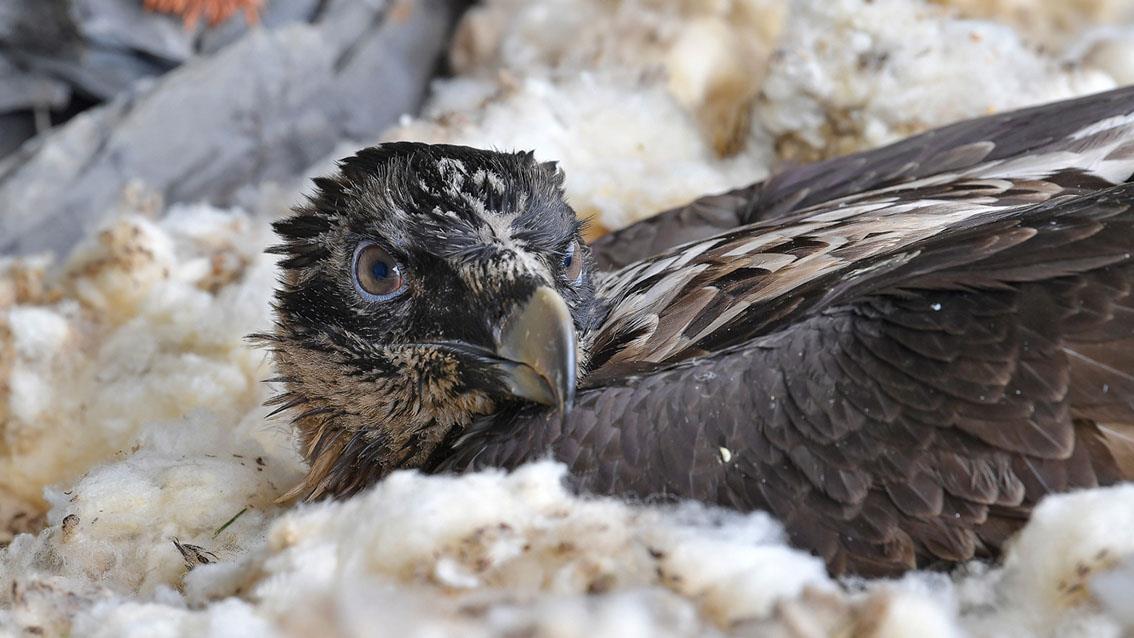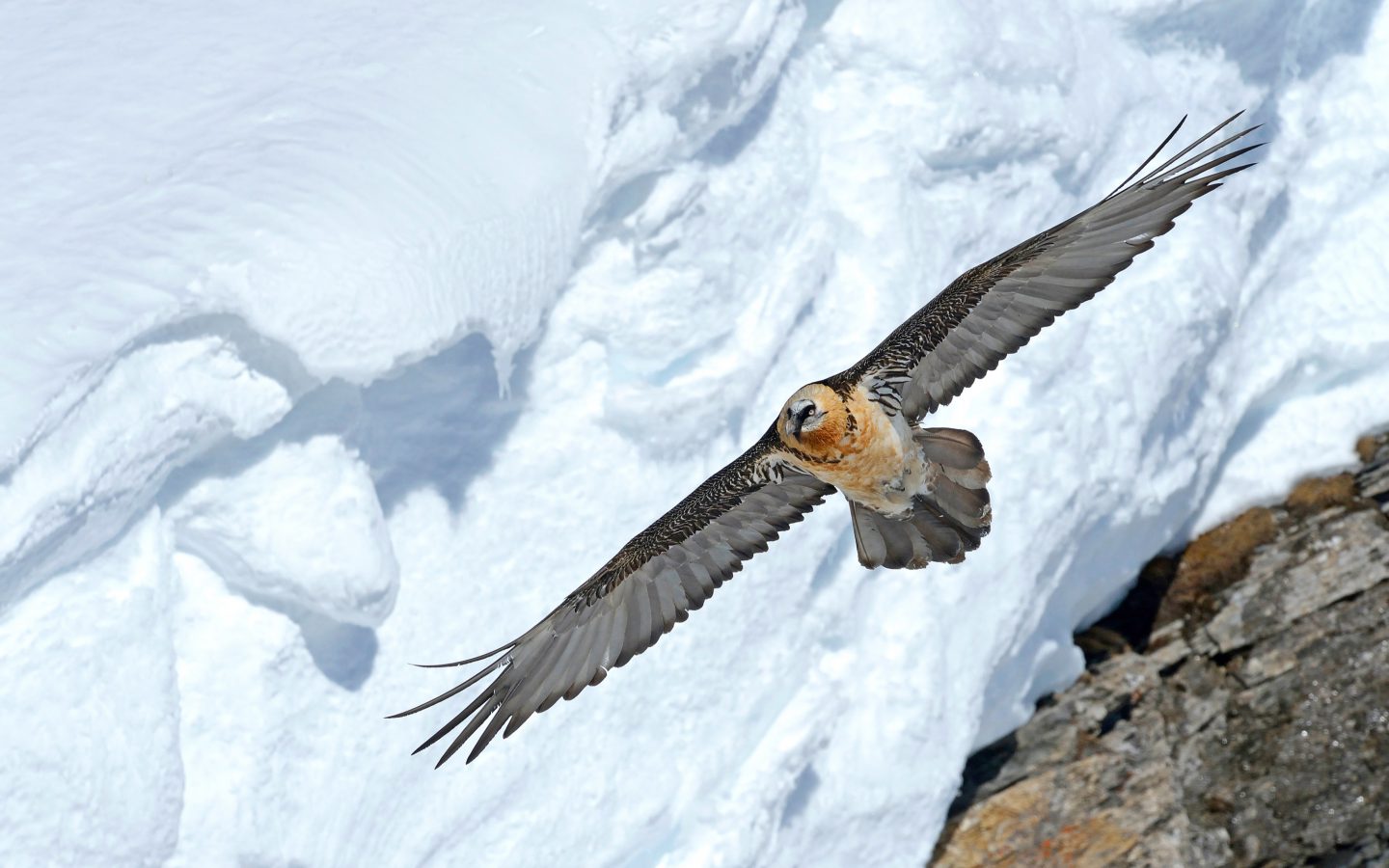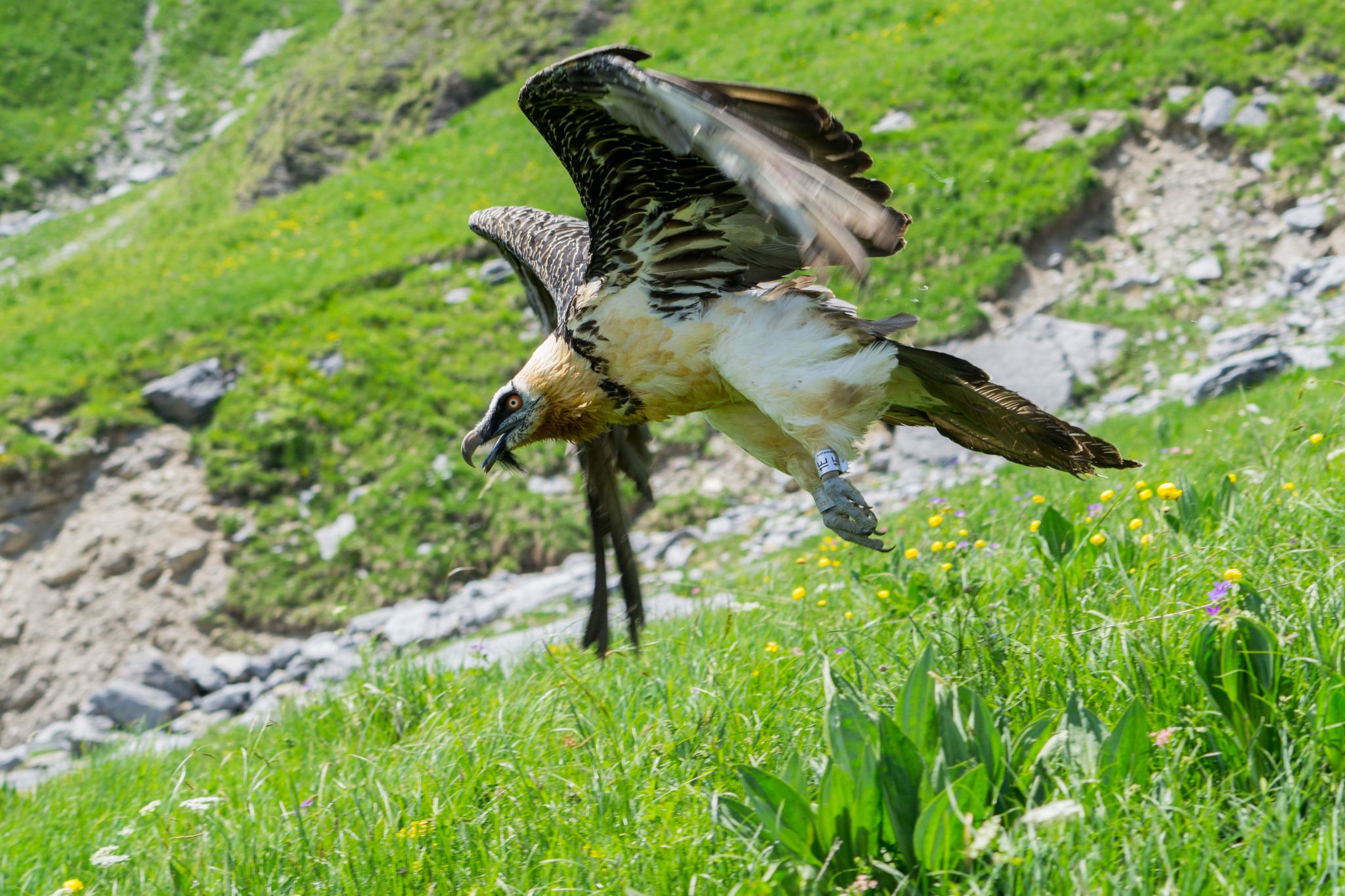2025 marks the eighth year of consecutive Bearded Vultures releases in Maestrazgo, Spain. This year the team welcomed a male and female named Hades and Hera, respectively. The two recently made their first flight.
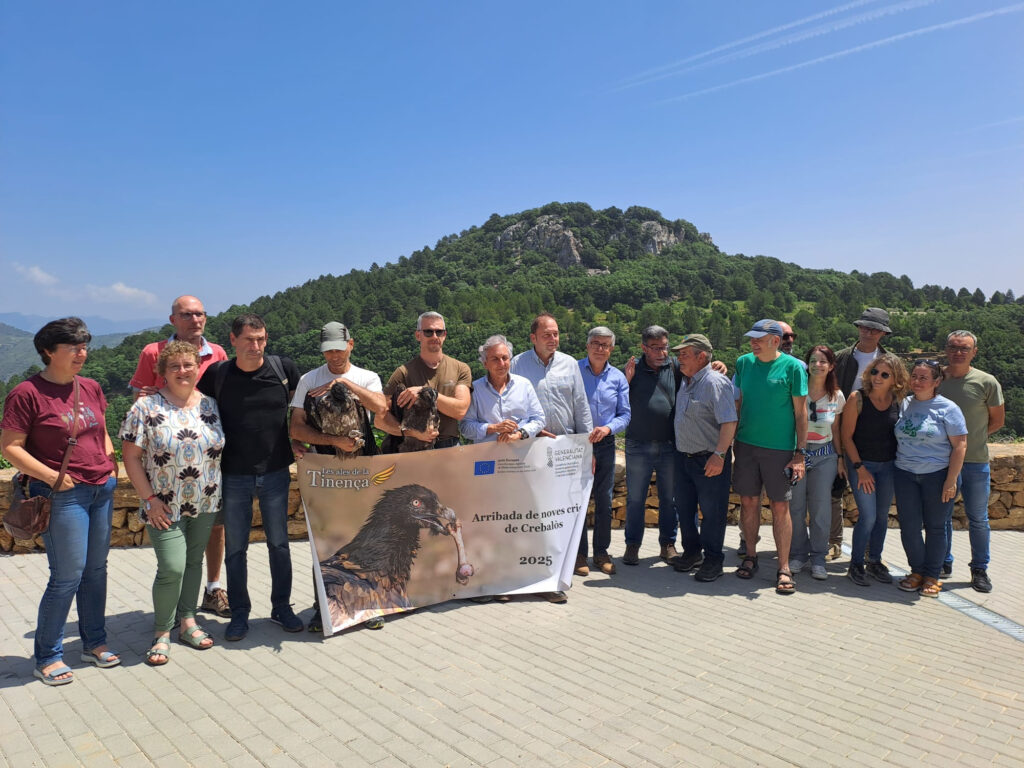
For the eighth consecutive year, the Maestrazgo Reintroduction Project released young captive-bred Bearded Vultures (Gypaetus barbatus) in the Tinença de Benifassà Natural Park (Spain). Hera, the female, hatched in Jerez Zoo a little over four months ago. The young male named Hades comes from Tierpark Berlin but was reared at the Richard Faust Zentrum, in Vienna.
On June 12, the two young Bearded Vultures have been released in the hacking site. Last weekend, the two birds made their first flight under the caring eyes of the monitoring team that was following them from afar.
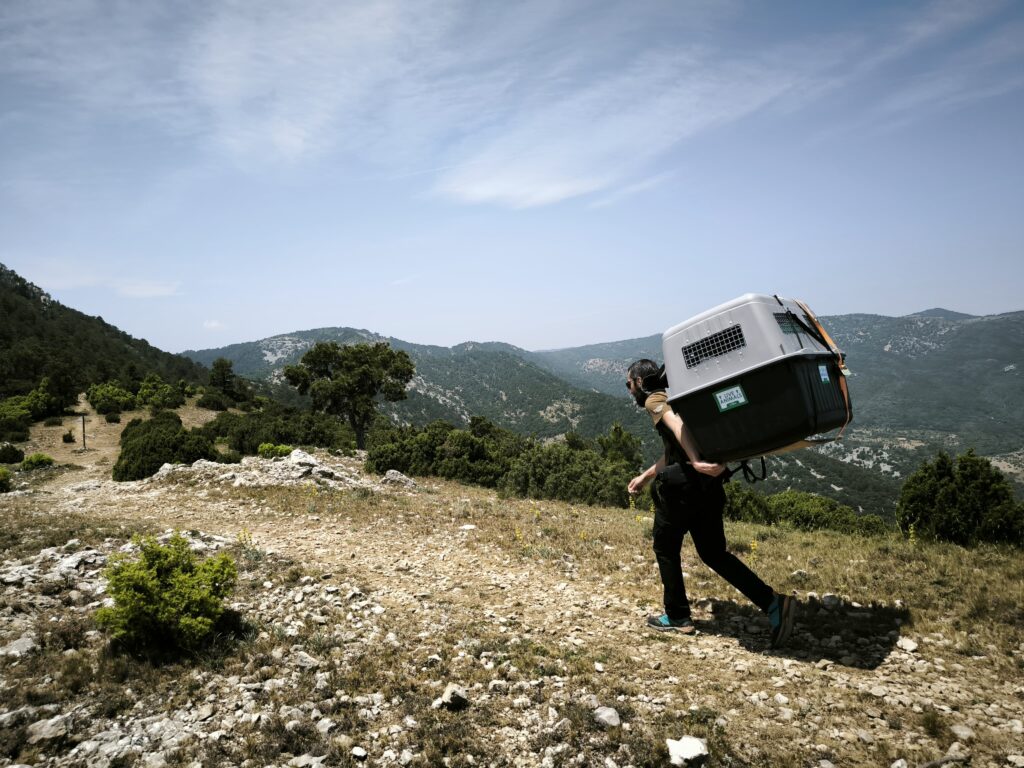
A new life for Hades and Hera
On June 12, Hades and Hera were placed in an artificial nest in a cave near their natural habitat allowing them time to acclimatise to their future home environment. To ensure proper socialization and less food competition, the team choose two birds that hatched only four days apart. While he was in the hacking cave, Hades needed to be treated for a parasite infection. Nevertheless, he demonstrated to be a fighter and often showed dominant behaviour towards Hera right away.
After spending a little over a month in the artificial nest, they both recently made their first flight. The first one to leave the nest was Hera, late in the afternoon of July 18. Hades followed her a day after, flying for the first time on July 19.
Although they have both flown from the nest, they will not be left completely on their own. The first months in the wild can be challenging for young birds, therefore the team will provide additional food sources at the three supplementary feeding stations built in the area. In this way, they will support Hades and Hera until they have learnt how provide for themselves and encourage them to develop a bond with their new territory
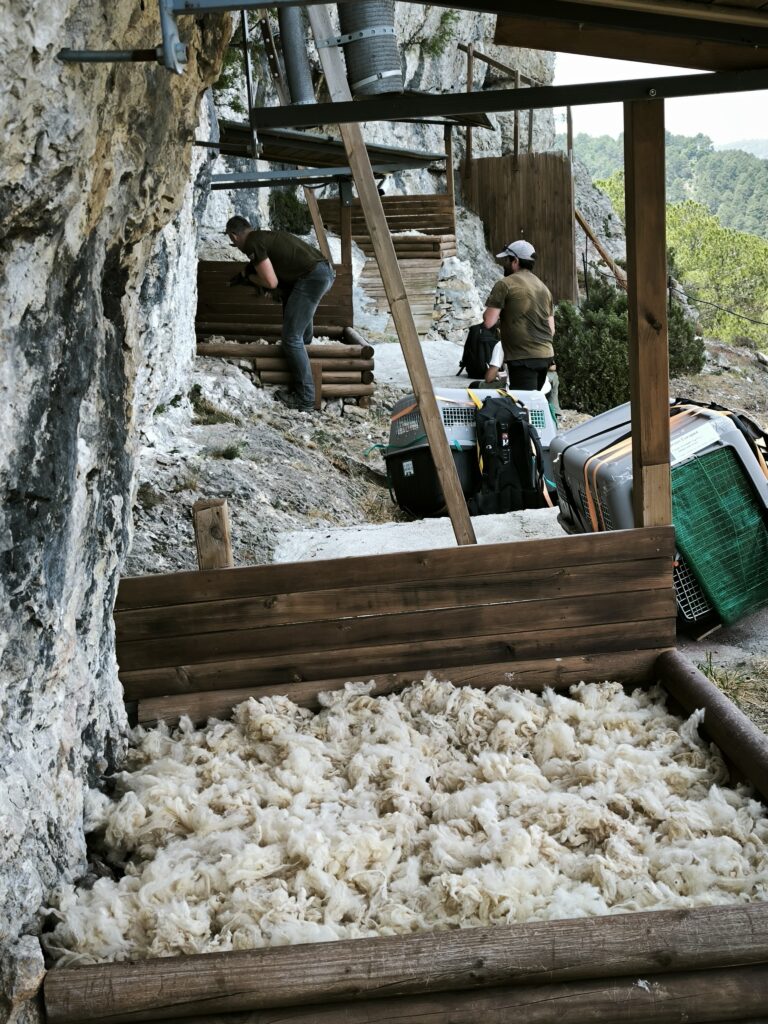
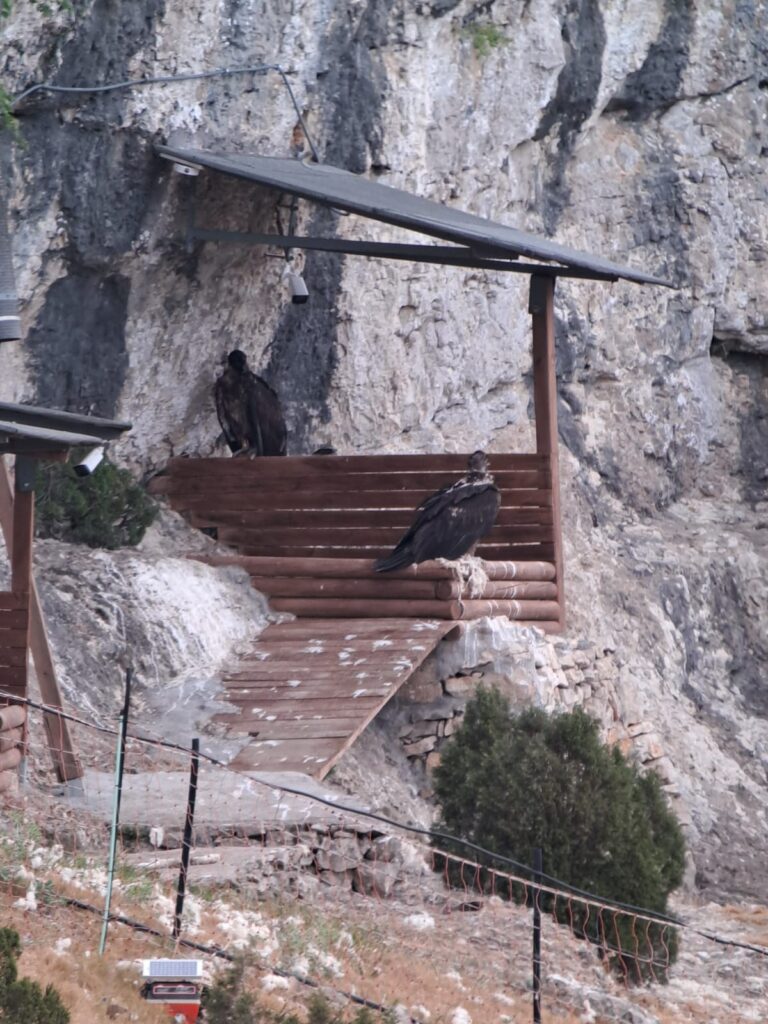
A vital corridor for Bearded Vultures in Europe
The Maestrazgo Reintroduction Project is led by the Generalitat of Valencia, in collaboration with the Autonomous Communities from Aragón y Catalonia, the Spanish Ministry MITECO (Ministry for Ecological Transition and the Demographic Challenge) and the Vulture Conservation Foundation. It aims to connect two existing Bearded Vultures populations in Spain: the Pyrenean one in the north and the Andalusian one in the south.
Historically, Bearded Vultures used to nest in the Maestrazgo area, creating a crucial corridor for the species. In fact, two connected populations are stronger and more genetically diverse than two isolated ones. For this reason, multiple conservation actions have been carried out in the area over the years.
To date, 19 Bearded Vultures have been released within the project:
- 2018: Amic and Alòs (2 males)
- 2019: Bassi and Boira (1 male, 1 female)
- 2020: Cocó and Celest (1 male, 1 female)
- 2021: Dena, Dalila, and Durall (2 females, 1 male)
- 2022: Ereta and Esperit (1 female, 1 male)
- 2023: Fredolic, Farigola, and Flora (1 male, 2 females)
- 2024: Gea, Guatia, and Genista (3 females)
- 2025: Hera and Hades (1 female, 1 male)
Of these, at least 11 have survived, and 7 of those continue to frequent the Maestrazgo massif – the others departed to the Pyrenees. Unfortunately, three of the 19 birds released have died throughout the years, one electrocuted and two probable victims of a territorial interaction with golden eagles.


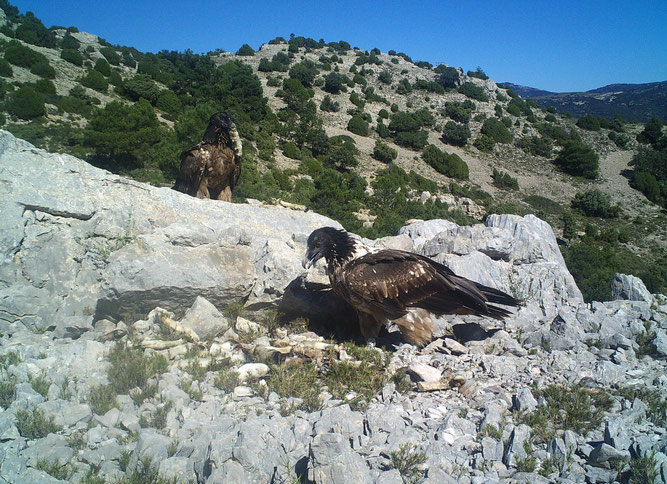
A hopeful start
Hades and Hera have started one of the most important chapter of their life. With them, the Maestrazgo Reintroduction Project builds one more step towards reconnecting two core areas for Bearded Vultures in Spain.
We are now seeing the first results. Amic and Bassi, released six and seven years ago, finally established themselves into a territory locally, and may start to breed in the next few years. Conservation is a long run. As we wish Hades and Hera a long and full life in the wild, we look at years of relentless efforts and commitment towards their species. At the same time, we look at the future of Bearded Vultures in Spain and in Europe, determined to give them the best chances to thrive.







